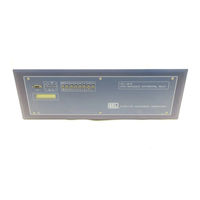
Schweitzer Engineering Laboratories SEL-587Z Manuals
Manuals and User Guides for Schweitzer Engineering Laboratories SEL-587Z. We have 1 Schweitzer Engineering Laboratories SEL-587Z manual available for free PDF download: Instruction Manual
Schweitzer Engineering Laboratories SEL-587Z Instruction Manual (276 pages)
High-Impedance Differential Relay
Brand: Schweitzer Engineering Laboratories
|
Category: Relays
|
Size: 4.06 MB
Table of Contents
Advertisement
Advertisement
Related Products
- Schweitzer Engineering Laboratories SEL-501-2
- Schweitzer Engineering Laboratories SEL-787
- Schweitzer Engineering Laboratories SEL-2BFR-2
- Schweitzer Engineering Laboratories SEL-700G Series
- Schweitzer Engineering Laboratories SEL-267D
- Schweitzer Engineering Laboratories SEL-221F-1
- Schweitzer Engineering Laboratories SEL-167D
- Schweitzer Engineering Laboratories SEL-321
- Schweitzer Engineering Laboratories SEL-351S
- Schweitzer Engineering Laboratories SEL-387-6
